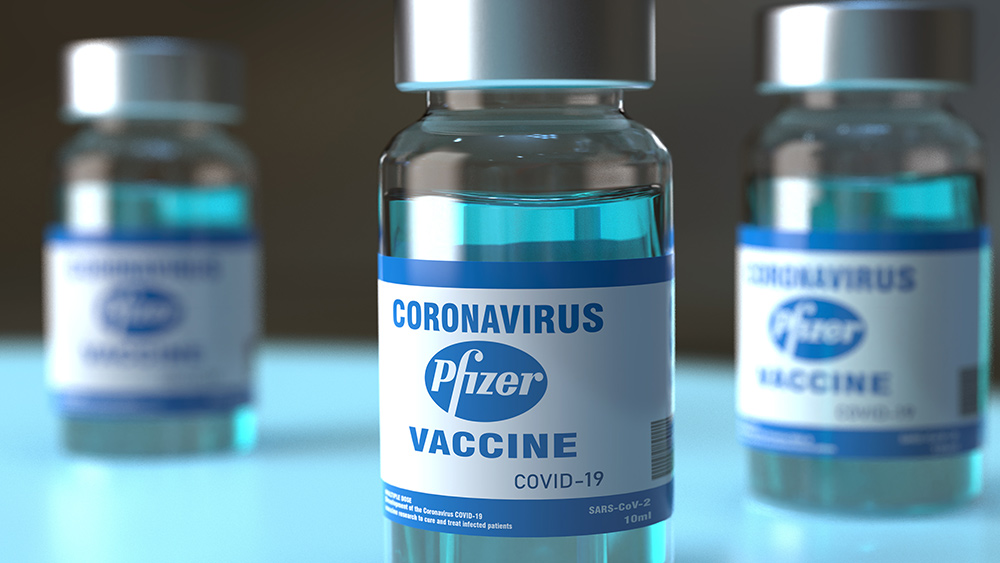DMSO: A new era in pain management
04/29/2025 / By Ramon Tomey

- DMSO quickly alleviates pain and reduces scar tissue/adhesions, as demonstrated by Marjorie Saloman’s case, which showed that topical application combined with vitamin E is a viable treatment.
- DMSO penetrates tissues without causing damage, acting as a carrier for other substances. It also has anti-inflammatory, bacteriostatic and analgesic effects, and aids in swelling reduction and healing.
- Dr. Stanley W. Jacob, a key figure in DMSO research, compares its impact to antibiotics and cortisone, citing its ability to revitalize cells and address conditions beyond pain, like immune modulation.
- Widely used in sports medicine, DMSO accelerates recovery from injuries (e.g., fractures, sprains) by reducing swelling and pain.
- Despite its proven efficacy and low toxicity, DMSO faces FDA resistance due to safety concerns (e.g., potential eye damage). Critics argue bureaucratic delays hinder access to a transformative therapy, fueling ongoing debate.
Dimethyl sulfoxide (DMSO) first gained attention in the medical community in the 1960s when it was discovered to have remarkable pain-relieving properties. One of the earliest documented cases of DMSO’s effectiveness in pain management involved Marjorie Saloman, a psychologist who was scheduled for a hysterectomy due to cervical spinal stenosis.
Dr. Eva Lee Snead, a family practice specialist, suggested applying a combination of DMSO and vitamin E topically to Saloman’s cervical area. The results were astonishing. Within minutes, the instrument slipped into the cervix without causing any pain, and the surgery was ultimately avoided.
This case exemplifies DMSO’s ability to reduce scar tissue and adhesions, highlighting its potential as a powerful therapeutic agent. Unfortunately, Snead’s medical license was revoked for employing DMSO and other alternative healing methods, reflecting the medical establishment’s resistance to unconventional treatments.
DMSO’s therapeutic principle is based on its unique ability to penetrate living tissues without causing significant damage. This property allows it to act as a carrier, delivering other substances through the skin and into the bloodstream. DMSO also exhibits anti-inflammatory, bacteriostatic and analgesic properties, making it effective in reducing swelling, inhibiting bacterial growth and alleviating pain.
Dr. Stanley W. Jacob, co-discoverer of DMSO’s therapeutic properties, describes it as a new principle in medicine akin to the discovery of antibiotics and cortisone. He emphasizes that DMSO’s effects are not limited to pain relief. It also promotes healing by revitalizing damaged cells and restoring them to a near-normal state.
DMSO has been widely embraced by athletes, trainers and team physicians for its ability to accelerate recovery from sports-related injuries. Its application in treating acute trauma, such as dislocations, sprains, strains and fractures, has been particularly noteworthy. For instance, June Jones III, a former quarterback for the Atlanta Falcons, credits DMSO with saving his football career by effectively treating calcification in his throwing shoulder.
Dr. Graham Reedy, a former team physician for the Oakland Raiders, observed that DMSO significantly shortens rehabilitation time for soft tissue and joint injuries. Athletes experienced immediate reduction in swelling and pain with DMSO, he added. This accelerated recovery process not only benefits athletes, but also has the potential to save millions of dollars in rehabilitation costs for injured workers.
Pain relief or peril?
DMSO’s journey from discovery to potential acceptance has been fraught with controversy. Despite its low toxicity and proven effectiveness, DMSO has faced significant opposition from regulatory bodies like the Food and Drug Administration (FDA). The FDA’s concerns about DMSO’s safety, particularly regarding potential eye damage, led to its ban in 1965 – except for treating interstitial cystitis.
However, public outcry over DMSO’s ban and the growing body of evidence supporting its safety and efficacy have kept the debate alive. Numerous scientific studies and clinical trials have demonstrated DMSO’s therapeutic benefits, yet regulatory hurdles persist.
The FDA’s reluctance to approve DMSO for broader medical use has been a source of frustration for many physicians and patients. Critics argue that the agency’s stringent regulations and bureaucratic inefficiencies have delayed the availability of a potentially life-saving treatment. The case of DMSO highlights the broader issue of balancing regulatory oversight with the need for timely access to innovative therapies.
DMSO represents a promising avenue for pain management and tissue healing, with potential applications in sports medicine and beyond. While its path to widespread acceptance has been challenging, the evidence supporting its efficacy and safety continues to grow. As Dr. Morton Walker aptly puts it in his book “DMSO: Nature’s Healer,” this compound deserves a place in the pharmacopeia for addressing a vast array of health problems.
Watch Dr. Steven Hotze and Ian Smith discuss how to eliminate joint pain with functional medicine in this clip.
This video is from the Hotze Health channel on Brighteon.com.
Sources include:
Submit a correction >>
Tagged Under:
alternative medicine, big government, breakthrough, cures, dimethyl sulfoxide, discoveries, DMSO, FDA, healing, health freedom, health science, pain relief, recovery, remedies, sports injuries, sports medicine, suppressed
This article may contain statements that reflect the opinion of the author
RECENT NEWS & ARTICLES
COPYRIGHT © 2017 FDA NEWS




















